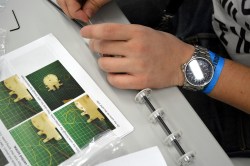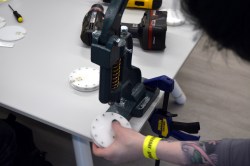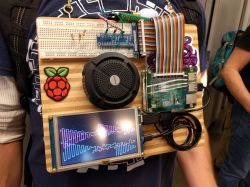A weekend for people who love hardware, by people who love hardware. It’s a simple recipe and it makes a delicious event that we call the Hackaday Superconference. If you made it to Pasadena last weekend, I’m sure going back to work on Monday was difficult after three days of far too little sleep and way too much fun. (It was for me.) If you didn’t make it to the con, set a reminder for July 1st to start watching for next year’s early bird tickets. Don’t believe me? Okay, let’s step through the hype of a weekend we’ll all remember.
Check out the recap video above and then join me after the break for a photo-heavy expose of the weekend’s highlights.
The Hacker Village
I think it’s really important to start an overview of Supercon by talking about the culture. We have amazing organized events led by people who are world-class in their fields: see the talk section below. But that wouldn’t matter if the vibe of the Supercon didn’t also meet those expectations.
We call the community of Supercon the Hacker Village. This is place of inclusion and acceptance. One of the first things I saw on Friday morning was a gentleman wearing a wooden cutting board on a string around his neck — the substrate for a custom Raspberry Pi powered badge. This is seen as perfectly normal. Want to wear your custom synthesizer around as a belt buckle? Perfectly normal. In fact it’s exactly the sort of thing I want to see at a conference; people who do the things they’re passionate about and are happy to share the story.
Grab a seat on the sofa and form up into teams to solve the badge puzzle challenge, to set up the compiler toolchain for reprogramming, or to resurrect your rusty BASIC programming skills? All normal.



<img width="250" height="167" src="https://hackadaycom.files.wordpress.com/2018/11/tentacle-workshop-2-wb.jpg?w=250&h=167" alt="" srcset="https://hackadaycom.files.wordpress.com/2018/11/tentacle-workshop-2-wb.jpg?w=250&h=167 250w, https://hackadaycom.files.wordpress.com/2018/11/tentacle-workshop-2-wb.jpg?w=500 …read more
Source:: Hackaday





